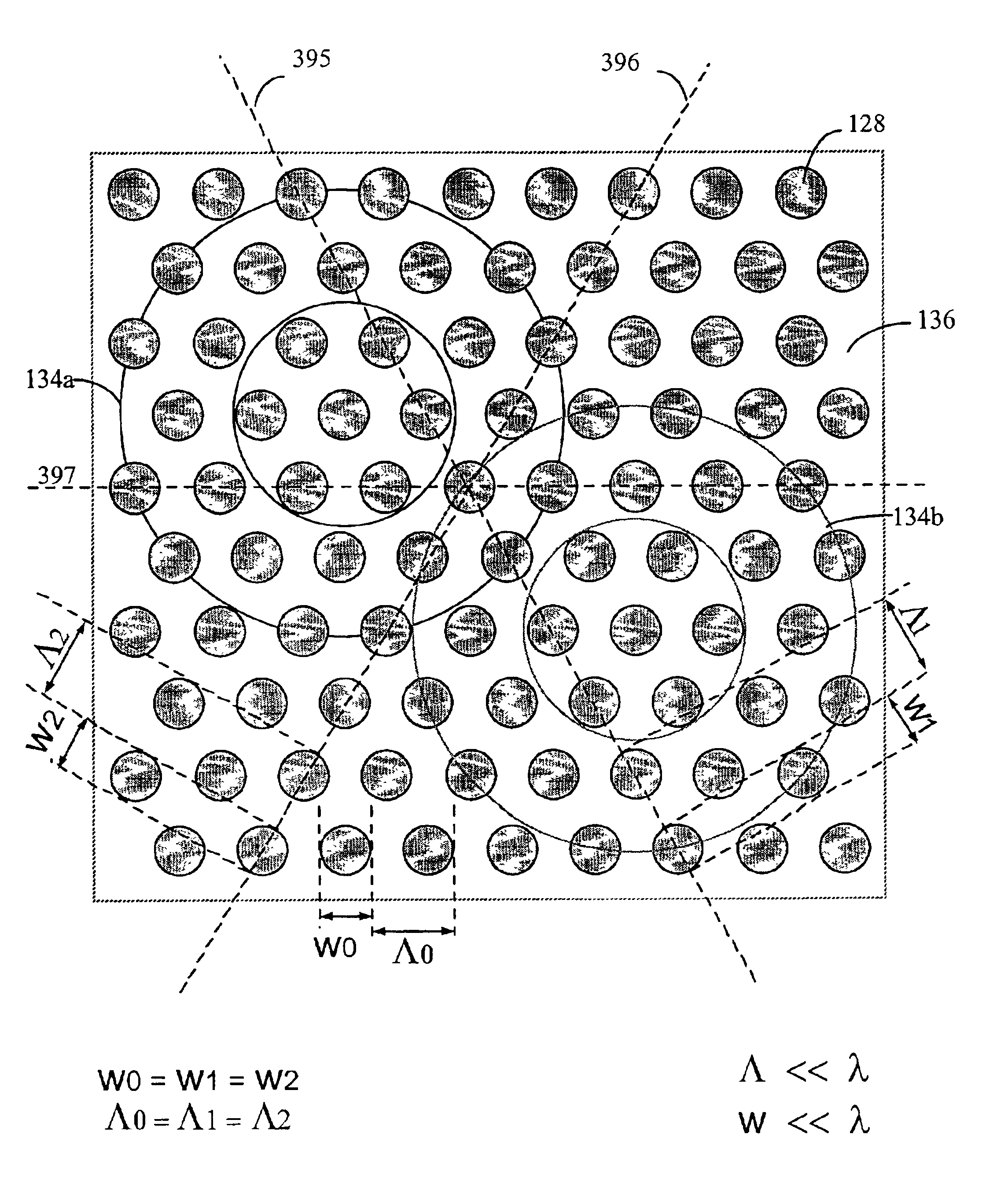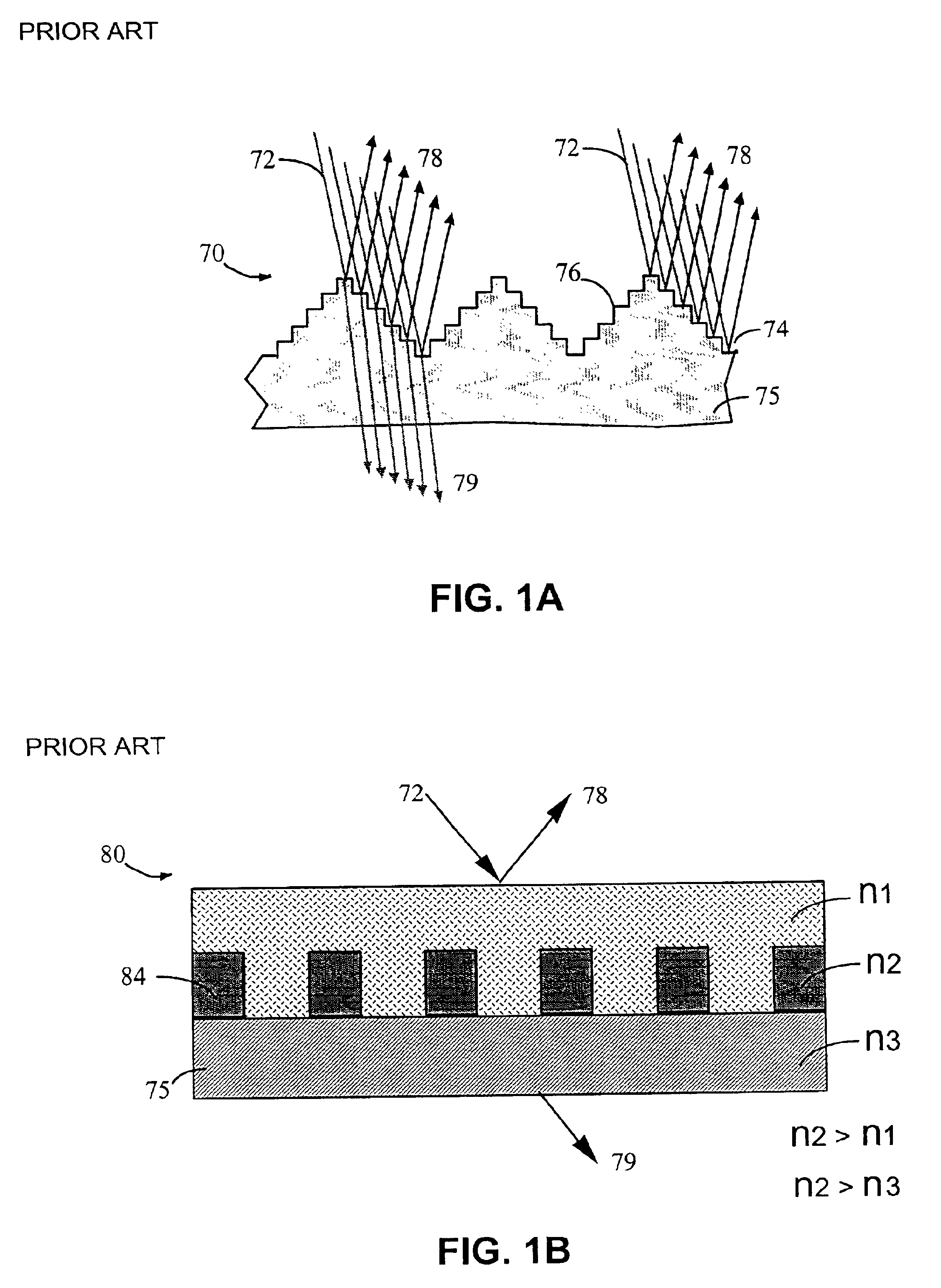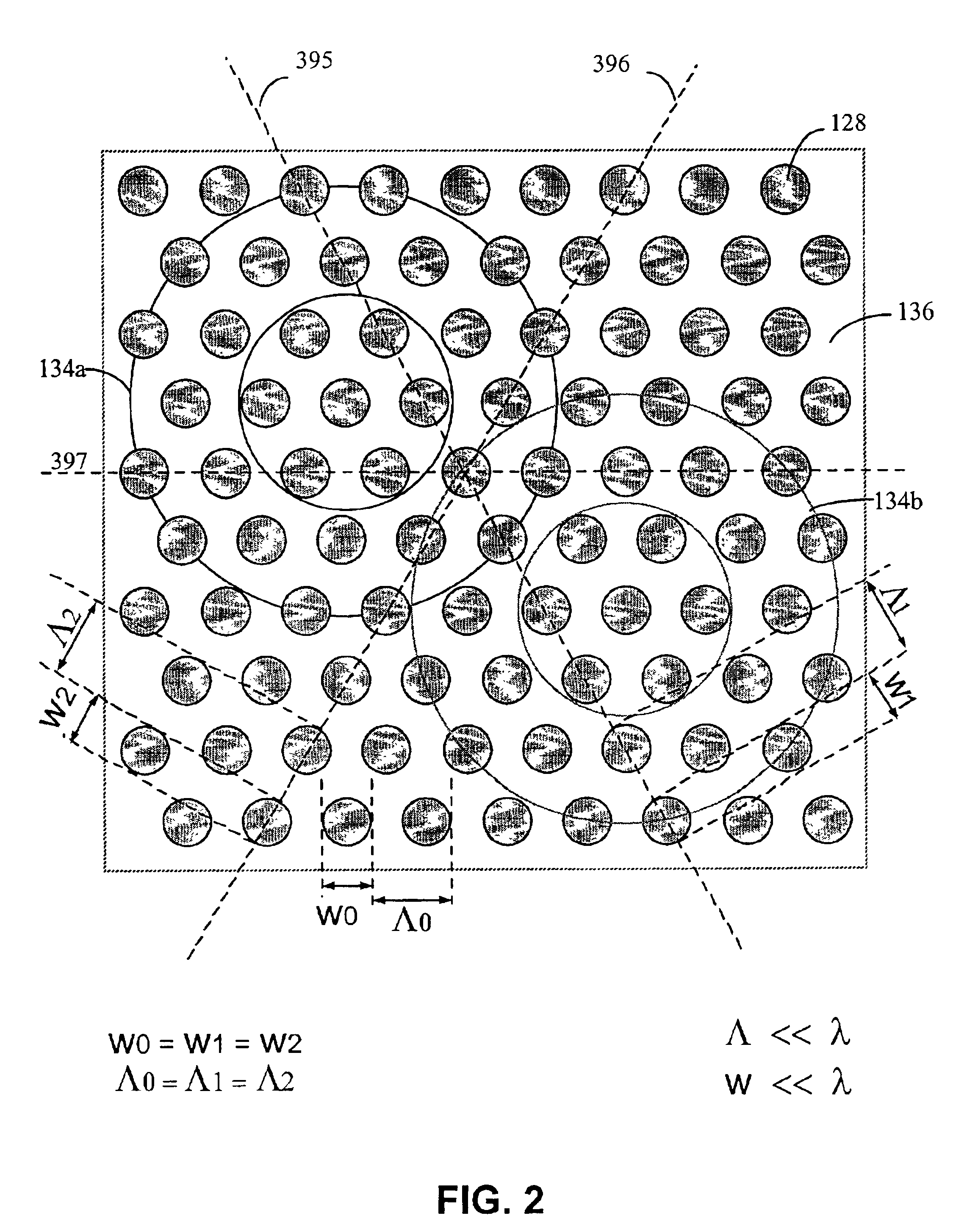Optical wavelength resonant device for chemical sensing
a technology of optical wavelength resonant and chemical sensing, which is applied in the field of biological or chemical sensors, can solve the problems of limited fluorescence-based biosensors, inapplicability of fluorescent compounds to all materials, and no method has been developed, and achieves the effects of low loss, efficient filtering, and high degree of circular symmetry
- Summary
- Abstract
- Description
- Claims
- Application Information
AI Technical Summary
Benefits of technology
Problems solved by technology
Method used
Image
Examples
Embodiment Construction
A description of preferred embodiments of the invention follows.
Prior art surface structure filters suitable for use as chemical sensors operate on free space optical beams, and their function can be described by a combination of prevailing theories as depicted in FIGS. 1A-1B. In FIG. 1A an Aztec Surface Structure Resonance 70 is shown where an incident optical beam containing a broad range of wavelengths 72, is partially reflected 74 from phase transitions or steps 76 comprising a structure on the surface of a substrate 75, each reflection adding coherently for only a narrow range of light wavelengths in a reflected beam 78, and having no affect on other wavelengths passed in a transmitted beam 79; in FIG. 1B a guided mode surface structure resonance device 80 is shown where a filtered reflected beam 78 is created only for a light wavelength matching the transverse variation of density 84 imposed by the surface structure shape and composition.
As shown in the process FIGS. 7A and 7B...
PUM
| Property | Measurement | Unit |
|---|---|---|
| angles | aaaaa | aaaaa |
| wavelengths | aaaaa | aaaaa |
| wavelengths | aaaaa | aaaaa |
Abstract
Description
Claims
Application Information
 Login to View More
Login to View More - R&D
- Intellectual Property
- Life Sciences
- Materials
- Tech Scout
- Unparalleled Data Quality
- Higher Quality Content
- 60% Fewer Hallucinations
Browse by: Latest US Patents, China's latest patents, Technical Efficacy Thesaurus, Application Domain, Technology Topic, Popular Technical Reports.
© 2025 PatSnap. All rights reserved.Legal|Privacy policy|Modern Slavery Act Transparency Statement|Sitemap|About US| Contact US: help@patsnap.com



